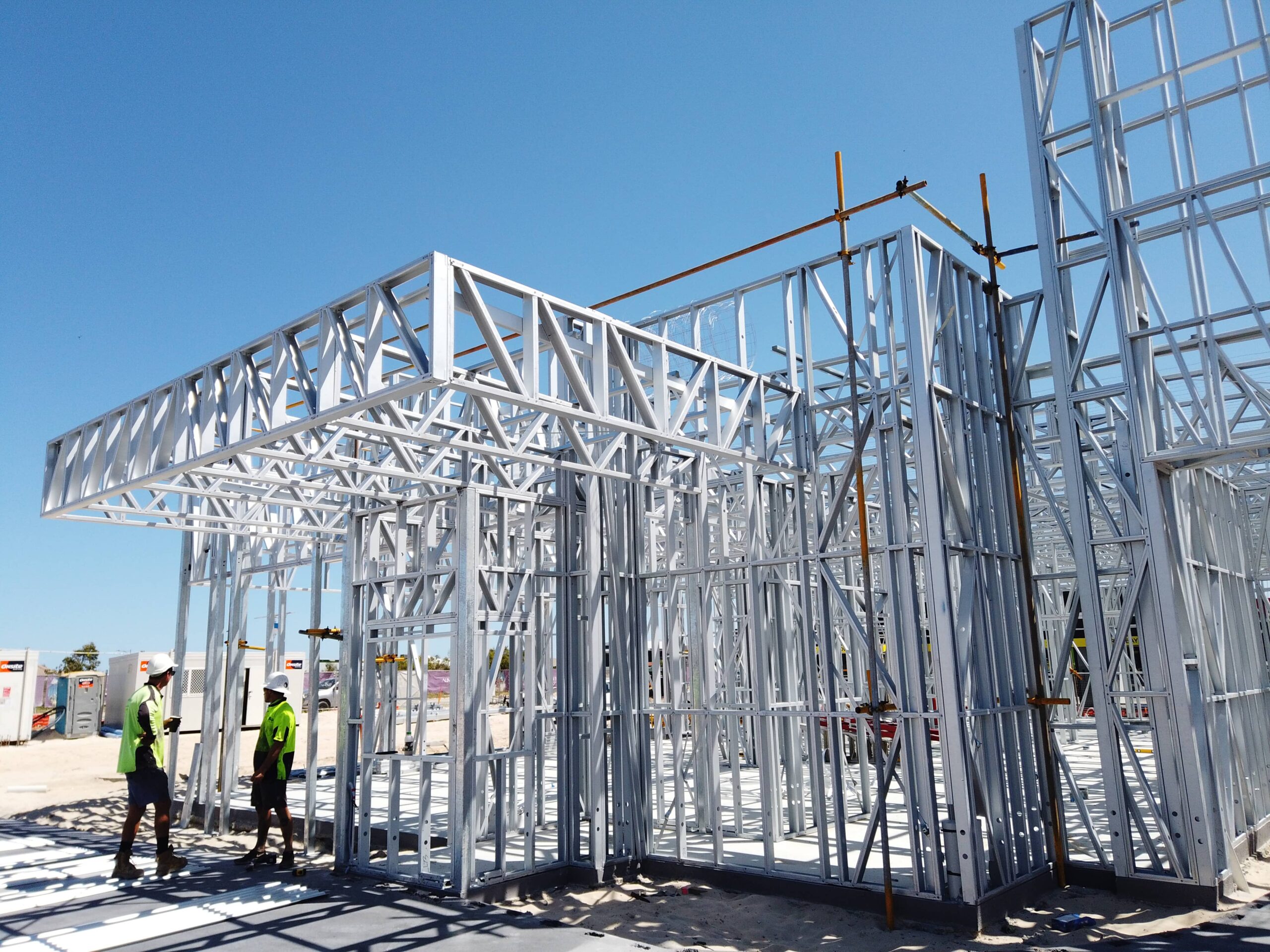Manufacturing & industrial steel building project
A manufacturing and industrial steel building project involves designing and constructing facilities specifically tailored for manufacturing processes, industrial operations, and production activities using steel as the primary building material. These buildings are critical for various industries such as automotive, aerospace, food processing, pharmaceuticals, and more. Steel offers several advantages that make it well-suited for manufacturing and industrial applications, including strength, durability, flexibility, cost-effectiveness, and sustainability.

Considerations for Manufacturing & Industrial Steel Building Projects:
1. Strength and Durability:
o Steel provides robust structural integrity, capable of withstanding heavy machinery, equipment loads, and industrial processes. It offers resistance to environmental factors such as wind, seismic activity, and corrosion, ensuring long-term durability and operational reliability.
2. Design Flexibility:
o Steel allows for versatile architectural designs and configurations, accommodating specific manufacturing and operational requirements. Buildings can include production floors, assembly lines, warehousing areas, cleanrooms, and specialized processing zones tailored to industrial processes.
3. Cost-Effectiveness:
o Steel buildings are often more cost-effective than traditional construction materials like concrete or masonry. They offer faster construction times, reduced labor costs, lower maintenance expenses, and potential tax incentives due to their energy efficiency and durability.
4. Customization Options:
o Industrial steel buildings can be customized to include features such as high ceilings for vertical storage, crane systems for material handling, insulated panels for temperature control, and modular layouts for future expansion or reconfiguration.
5. Energy Efficiency:
o Steel structures can integrate energy-efficient systems such as insulation, cool roofing materials, and advanced HVAC systems. This improves thermal performance, reduces heating and cooling costs, and supports sustainable manufacturing practices.
6. Safety and Compliance:
o Steel buildings meet stringent safety standards and building codes required for industrial facilities. They can incorporate fire-resistant materials, emergency exits, ventilation systems, and environmental controls to ensure worker safety and regulatory compliance.
7. Adaptability and Scalability:
o Steel buildings facilitate easy adaptation and scalability as manufacturing operations grow or change. They accommodate technological upgrades, process improvements, and equipment modifications without major disruptions to production schedules or facility operations.
8. Environmental Sustainability:
o Steel is a sustainable building material with high recyclability and minimal environmental impact. Manufacturing and industrial steel buildings contribute to green building certifications, promote energy efficiency, and support sustainable practices in industrial sectors.
Applications of Manufacturing & Industrial Steel Buildings:
• Factory Buildings: Production facilities, assembly plants, and manufacturing units equipped with machinery and production lines.
• Warehousing and Distribution Centers: Storage facilities for raw materials, finished goods, and logistics operations.
• Research and Development Labs: Laboratories, testing facilities, and innovation centers for product development and process optimization.
• Processing Plants: Food processing facilities, pharmaceutical manufacturing, chemical processing plants, and industrial processing units.
• Steel-framed factory building with column-free spaces for efficient layout of machinery and assembly lines.
• High bay warehouse with mezzanine levels for vertical storage and inventory management.
• Cleanroom facilities with specialized HVAC systems and controlled environments for precision manufacturing and sterile processing.
• Sustainable design elements such as LED lighting, rainwater harvesting, and waste management systems to minimize environmental impact and support LEED certification.
Choosing a Steel Building Provider:
• Expertise and Experience: Select a reputable steel building provider with specialized knowledge in manufacturing and industrial construction projects.
• Collaborative Design Process: Engage with architects, engineers, and industrial specialists to develop customized designs that meet specific production requirements, operational efficiencies, and industry standards.
• Quality Assurance: Ensure the provider adheres to industry best practices, safety protocols, and sustainability guidelines throughout the project lifecycle, including compliance with manufacturing regulations and environmental permits.




